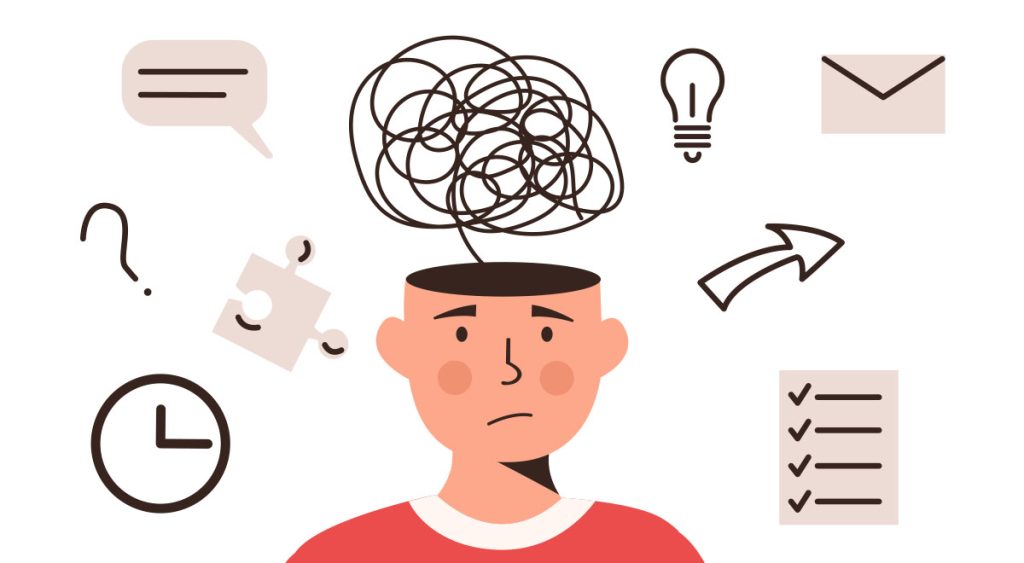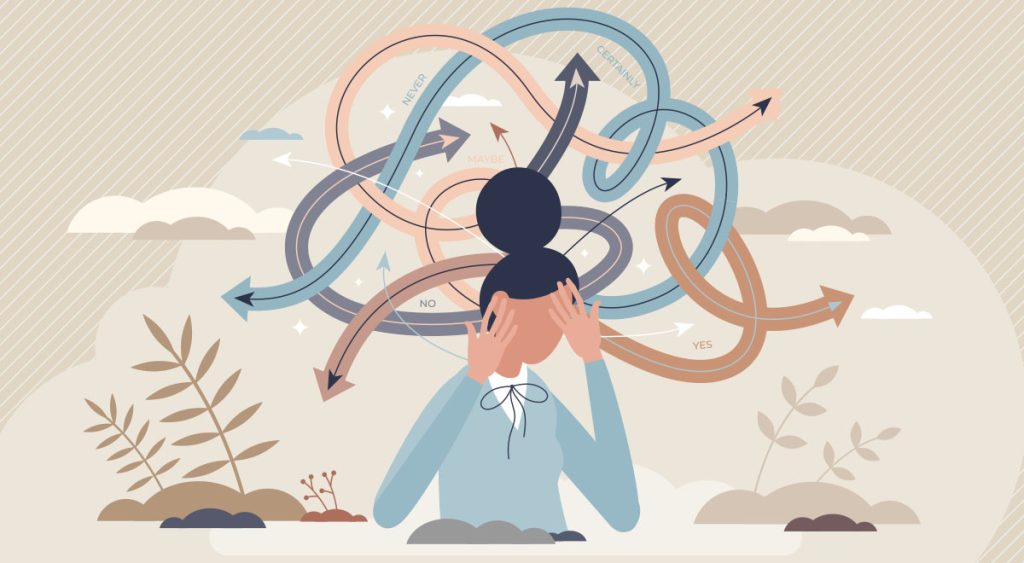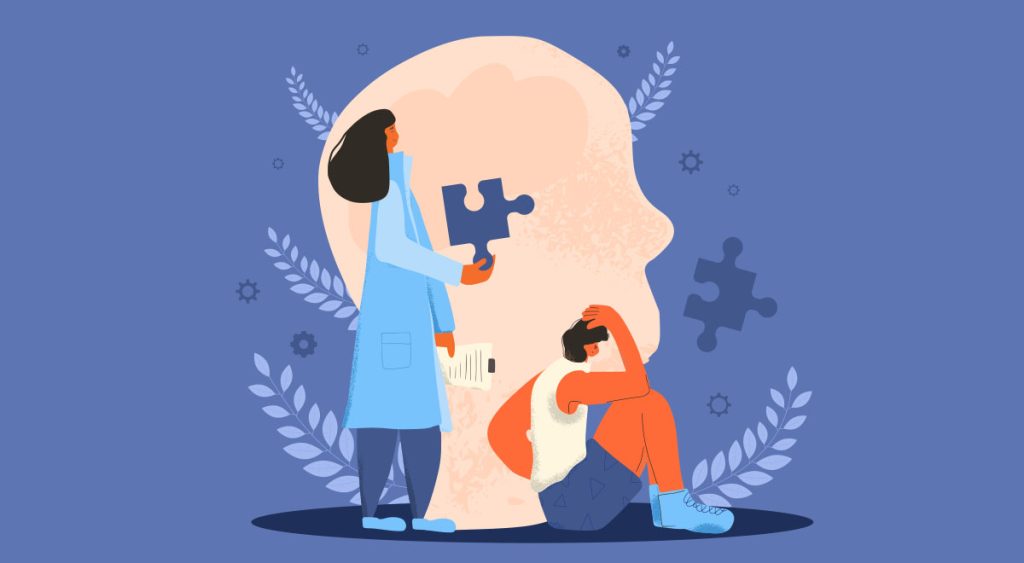Everybody may battle with waning attention, sitting still or controlling impulsive behavior from time to time. For some people, however, these issues persist to the point of dysfunction and begin to pervade their home, social and academic or professional lives. ADHD (attention deficit hyperactivity disorder) is marked by these increased levels of inattention, hyperactivity and impulsivity that interfere with functioning or development.
Classifying ADHD
ADHD was formerly known as ADD (attention deficit disorder), with this diagnosis referring more specifically to symptoms of inattention. The clinical term officially changed from ADD to ADHD in the 1990s. ADHD is classified as a neurodevelopmental disorder, where the development of the brain’s self-management system is impaired. It does not fall into the categories of mental illness, behavior disorders or specific learning disabilities. It is the most frequently diagnosed mental disorder in children, and is more common in boys than girls. It is usually identified during the early school years, where children begin to show problems with attention. Both adults and children can be diagnosed with ADHD.
ADHD Symptoms
Symptoms of ADHD can range from mild to severe. ADHD symptoms can appear as early as ages three to six, continuing through teenage years into adulthood. Symptoms may change over time with age. In young children, for example, the most prominent ADHD symptom is hyperactivity-impulsivity. Inattention may then become the more dominant symptom as the child progresses to elementary school.

Symptoms of hyperactivity seem to lessen in teenagers, developing into fidgeting and restlessness, although signs of impulsivity and inattention may still be present. At this age, individuals may start to have difficulties with relationships and social behaviors. Characteristics of ADHD in adults typically include inattention, restlessness and impulsivity. Some individuals with ADHD may show fewer symptoms as they age, but many adults continue to experience major symptoms that disrupt their day-to-day functioning.
When it comes to noticing characteristics of ADHD in adults, individuals are often unaware that they have it, but typically find everyday tasks to be challenging. They may find it hard to concentrate and prioritize responsibilities, leading to overlooked work obligations, missed deadlines or forgotten social plans. Low impulse control could present as impatience when driving in traffic, queuing at the supermarket or sudden outbursts of anger. When observing characteristics of ADHD in adults, some individuals experience more symptoms of inattention. Others may have more hyperactivity or impulsivity. Some individuals may have both types of ADHD symptoms.
Primarily Inattentive ADHD
Primarily inattentive characteristics of ADHD in adults or children include being forgetful and easily distracted. Individuals find it difficult to focus, finish tasks and follow instructions. They may be considered daydreamers by their peers, often losing track of personal items, making seemingly careless errors in school or work, and drifting off in conversations.
These individuals may begin tasks but lose focus, or avoid those that require sustained mental effort altogether. They may find it difficult to manage their time, execute tasks in sequence, meet deadlines or organize activities. They may be forgetful when it comes to daily activities, such as chores, errands or keeping appointments, and they may not seem to listen when spoken to directly.
Some clinical professionals believe that many children with this subtype of ADHD may go undiagnosed because they are not disruptive in the school environment.
Primarily Hyperactivity-Impulsivity ADHD

Individuals with symptoms of this subtype may battle to stay seated for long periods of time, and generally feel restless. They may talk excessively, interrupt others in conversations or activities, answer questions before they are fully asked or finish other people’s sentences inappropriately. They may experience high levels of impatience, and constantly be moving or busy, as if driven by a motor.
Primarily Combined Type ADHD
Individuals will be diagnosed with combined type ADHD if they display enough symptoms of both inattentive and hyperactivity-impulsivity ADHD.
Diagnosing ADHD
Most individuals will experience ADHD-type symptoms during the course of their lives. If relevant difficulties are recent or have only occurred on occasion in the past, they are likely not symptoms of ADHD. ADHD is only diagnosed when symptoms are disruptive enough to cause ongoing issues in multiple areas of one’s life, and symptoms have been present throughout childhood – particularly before the age of 12. In some cases, ADHD symptoms are mistaken for disciplinary or emotional problems, if not entirely missed in those presenting primarily with inattentive ADHD symptoms.

Characteristics of ADHD in adults can be difficult to diagnose. This is because ADHD shares a number of symptoms with other conditions, such as mood disorders and anxiety. Adults presenting with ADHD symptoms also typically have at least one other mental health condition, such as anxiety or depression. Accurately determining the cause of symptoms therefore requires a thorough and careful evaluation. Undiagnosed ADHD in adults will likely be coupled with poor academic performance in the past, problems in the work place and/or trouble in relationships.
ADHD Treatment and Therapies
ADHD has no cure, but a variety of targeted ADHD treatments and therapies to reduce symptoms and improve functioning can support an individual’s mental health recovery.
Medication
Medication is one of the most prevalent ADHD treatments used to reduce symptoms of hyperactivity and impulsivity and improve the ability to focus. Several different medications or dosages may be tested before finding an ideal solution for a particular individual.
Stimulants
Stimulants are the most common form of medication used in treating ADHD symptoms. While this may seem counterproductive to reduce hyperactivity, stimulants increase levels of dopamine and norepinephrine in the brain, which have critical effects on attention and thinking.
Non-Stimulants
Less common forms of medication as ADHD treatments include non-stimulants. These typically take longer to start working than stimulants, but still offer meaningful improvements in attention, focus and impulsivity. Non-stimulants are usually considered after stimulants have proven to be ineffective ADHD treatments in particular individuals, or are producing problematic side-effects. They may also be used in conjunction with stimulants to increase their efficacy.
Antidepressants
The use of antidepressants as an ADHD treatment has not been approved by the FDA (USA Food and Drug Administration); however, some antidepressants may help ADHD symptoms – particularly in combination with stimulants if an individual experiences symptoms from another condition, such as depression or an anxiety disorder, or has problematic side-effects from stimulants alone.
Medical professionals and individuals with ADHD symptoms can explore medication options and dosages together. Careful monitoring of an individual’s response to medication is required to ensure the best possible outcome and protect against misuse or excess use.
Psychological Intervention
A number of psychosocial interventions have been proven helpful to both the person with ADHD and their families in managing ADHD symptoms and improving everyday functioning.
Blame, anger and frustration may build up in the families of those living with a school-age child before they are diagnosed with ADHD. Mental health professionals are able to address negative feelings and educate the child’s support system about the condition. Both the child and family will be introduced to skills, attitudes and forms of communication that can promote wellbeing.
Parents are required to play an active role in the therapeutic process for children and teenagers with ADHD. Psychotherapy providing individual treatment will not effectively help manage ADHD symptoms, although it may assist with comorbidities such as depression or anxiety.
Behavioral and Cognitive Behavioral Therapy
These types of psychotherapy are designed to implement behavioral change. They aim to teach individuals how to monitor their own behavior and provide positive reinforcement for acting in a desirable way, such as thinking before acting or anger management. This may include collaborative input from family members or teachers, as well as introducing skills to read facial expressions and tone of voice, improve social behavior and build routines.
Marital and Family Therapy
This type of therapy helps spouses and family members to manage disruptive symptoms, encourage positive behavior and improve personal relationships with the individual who has ADHD.
Parenting Skills Training
Designed specifically for parents of children with ADHD, this training equips parents with the skills to encourage and incentivize better behavior in their children. This is usually done by implementing a system of rewards and consequences.
Classroom Management Interventions
Certain academic adjustments or accommodations may be made to improve the performance and function of the child or teenager in a school environment. These could include preferential seating in the classroom or extended time provided on tests and exams.
Support Groups
Parents and families of individuals living with ADHD can come together in designated support groups. Here, family members can share information, challenges and successes from their experiences, learn stress management techniques, and talk to experts.
New Medical Device
A new medical device to treat children with ADHD has been approved by the FDA. Known as the Monarch external Trigeminal Nerve Stimulation (eTNS) System, this device is specifically targeted at children between the ages of seven and 12 who are not taking ADHD prescription medication. The device is roughly the size of a smartphone and designed to be used while the child is sleeping. It generates low levels of electrical stimulation that travel through a small wire to a patch placed on the child’s forehead. Signals are then sent to areas of the brain relating to attention, emotion and behavior. If this device is being considered to address ADHD symptoms, further information and instructions from a healthcare professional is needed.
Alternative Medicine
There is little research to support using alternative medicine treatments to address ADHD symptoms. Such ADHD treatments that have been tried but not fully proved scientifically include yoga and meditation, elimination diets that avoid sugar, processed foods, and artificial food colorings and additives, supplements including vitamins, minerals, herbs and essential fatty acids, and neurofeedback training (also called electroencephalographic or EEG biofeedback).
It is important that a medical professional is consulted before considering any alternative interventions.
Organizational Tips for Children and Adults
Children
Parents, caregivers and teachers can help children manage their ADHD symptoms with strategies to follow directions and stay organized. These could include having a set place for everyday items, such as school bags and clothing, following a routine that stays the same day to day, encouraging children to keep a written record of assignments, laying out clear rules for behavior, and giving praise or rewards when these rules are adhered to.
Adults
A counselor or therapist can help adults living with ADHD to better organize their lives with certain practices. These could include keeping strict routines, making lists for tasks and responsibilities, assigning particular places for household items such as keys and bills, and breaking down larger tasks into smaller, more manageable ones to provide more opportunities for feelings of accomplishment.
ADHD Risk Factors
While exact causes of ADHD are not fully understood, a combination of factors are thought to be potential contributors.
Genetics
ADHD often runs in families, with research showing that parents and siblings of an individual with ADHD have a higher chance of having ADHD themselves. While genes inherited from parents are probably a significant factor in developing the condition, it is thought that inheritance is most likely a complex issue and not related to a single genetic fault.
Brain Structure and Function
When comparing the brains of people with ADHD to those without the condition, researchers have identified various differences. These include a potential discrepancy in brain size, with some areas being smaller or larger in those with ADHD, although the significance of this is not clear. Other research has suggested there may be an imbalance or dysfunction of neurotransmitters in the brains of those with ADHD, although these findings are not conclusive.
Circumstances
Individuals living through certain circumstances are believed to be more at risk of ADHD. These include individuals living with epilepsy, those exposed to toxins such as lead, babies who had a low birth weight or were born prematurely, and those who experienced maternal drug use, alcohol use or smoking during pregnancy. Individuals who suffered brain damage, either in the womb or after a severe head injury later in life, are also thought to be at a higher risk. While poor nutritional habits are considered to be contributors, such as following a western diet inclusive of high sugar and processed foods, there is no conclusive evidence to support this. While ADHD can’t be prevented or cured, identifying it early on and implementing a sound education or ADHD treatment plan can help the individual to effectively manage their symptoms. Failure to diagnose and address the condition can have serious consequences, including academic or professional failure, disruptions in home life, stress and depression, relationship issues, delinquency, accidental injuries or substance abuse. Early diagnosis and management is therefore extremely important and correlates strongly with the individual’s fulfillment, productivity and happiness.
